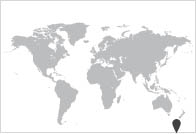

Antarctica
(Herbert G. Ponting / Getty)
Scott’s Terra Nova Expedition of 1910–1913 followed on from his Discovery Expedition of 1901–1904, which, by many measures, had been a success. Scott had set a new record for Southern exploration and had discovered the Polar Plateau.
Unlike the Discovery Expedition, the Terra Nova was at least 50 percent privately financed, to the tune of £40,000. The cost of the ship alone was £12,500. Eight thousand men made an application to join the Terra Nova; sixty-five were selected, including seven veterans of Discovery and five of Shackleton’s men.
Scott was spurred on to return to the Southern Hemisphere by rival Ernest Shackelton’s narrow failure to reach the Pole in 1909, as well as reports of planned Japanese, Australian and Norwegian expeditions. En route to the Antarctic, Scott had communication from Norway’s Roald Amundsen that he was also heading south. He was in a race.
Scott lost the race and ultimately his life, together with Dr. Edward Wilson, Lawrence Oates, Henry ‘Birdie’ Bowers and Edgar Evans. More than twenty years later, in his acclaimed account The Worst Journey in the World, expedition member Apsley Cherry-Garrard felt: ‘The whole business simply bristles with "ifs".'
‘The Pole. Yes, but under very different circumstances from those expected . . . Great God! This is an awful place and terrible enough for us to have labored to it without the reward of priority. Well, it is something to have got here.’
Diary of Robert Falcon Scott, January 7, 1912